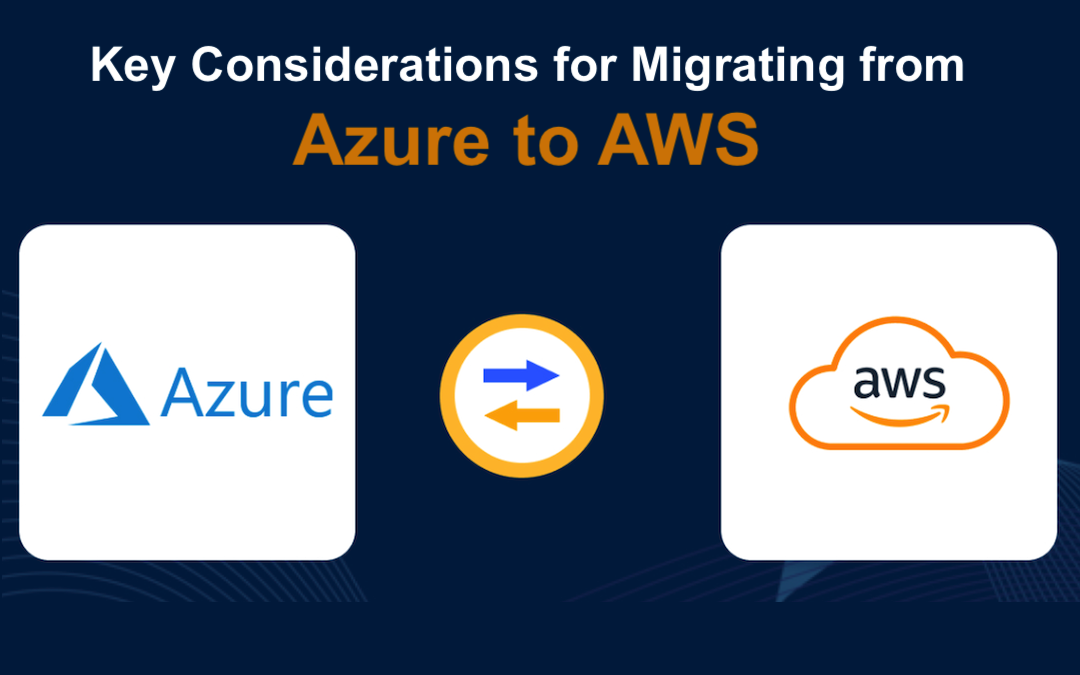
The first names that come to mind while discussing cloud infrastructure providers are probably Google Cloud, Amazon Web Services (AWS), or Microsoft Azure.
To help you get the most out of your move from Azure to AWS, let's take a look at some of the most important things to think about. Continue reading and stay tuned.
How does AWS outshine Azure?
Why switch from Azure to Amazon Web Services (AWS), you ask? Does Azure really outperform AWS? To be fair, both AWS and Azure are robust cloud systems; nonetheless, there are some scenarios in which AWS excels. Important domains include:
- With several compliance certifications, AWS demonstrates its active support for worldwide security standards. Because of its dependability and security, AWS is trusted by important businesses including HealthCare.gov, NASDAQ, and DISA. You can keep tabs on user behavior using services like CloudTrail and IAM. Firewall rules are configurable, allowing you to govern access levels.
- Reserved Instances, and Spot Instances are just a few of the pricing models and tools offered by AWS that help businesses optimize their costs and keep their budgets in check.
- AWS is ahead of the curve when it comes to technical breakthroughs, offering clients state-of-the-art solutions, thanks to its regular release of new features and services.
- With a more sophisticated infrastructure, AWS offers services in 245 nations and territories, surpassing Azure's global reach. More than 200 data centers, 29 zones with very low latency, and 35 zones on-premises make AWS appealing to businesses with worldwide requirements.
Factors to keep in mind while migrating to AWS
If you want your migration from Azure to AWS to go off without a hitch, make sure you have a thorough checklist or contact itmagic.pro for assistance. Before beginning and throughout the migration process, keep the following in mind:
- First things first: take stock of your current Azure setup. The data needs, application dependencies, and performance indicators should be understood. Make sure the scope, objectives, and dates are all clearly outlined in your migration strategy.
- Examine the financial ramifications of migrating to AWS. Optimize your cloud budget by considering aspects like pricing models, Reserved Instances, and possible savings with AWS Cost Explorer.
- Verify that the AWS environment satisfies all of your security and compliance needs. For a strong defense, check out AWS's encryption choices, identity management tools, and security features.
- Use AWS's Virtual Private Clouds (VPCs), Direct Connect, and VPN connections to map out your network infrastructure. Maintain a constant flow of data between resources hosted on-premises and those on AWS.
- Find a way to move data from one database to another. "Rehosting", "replatforming", and "refactoring" are the three most common approaches to migrating databases. While all options have merit, you should choose the one that allows you to get the most out of your relocation.
- Determine if your applications are compatible with the services offered by AWS. To make sure that apps work properly on AWS, you need to figure out what changes to the code or configuration are required.
- Create an AWS backup and recovery plan. Make sure your company can keep running by setting up AWS Backup and AWS Disaster Recovery.
- Maximize efficiency while keeping expenses to a minimum by appropriately sizing your AWS resources. Allocation of resources may be optimized with the help of AWS CloudWatch and AWS Trusted Advisor.
- Make sure your team has the training and knowledge to handle AWS resources well. AWS provides a wealth of training materials and certifications. With IT-Magics AWS consulting services, you can be certain that their seasoned staff will provide top-notch results at every stage.
- Before the actual move, make sure your migration strategy has been validated and tested thoroughly. Verify the performance and functioning of apps in AWS and carry out trial migrations.
- Migration logs, configurations, and security settings should all be well-documented. For both current and future problems, this documentation is priceless.
- After migrating to AWS, make sure all apps and services are running well by doing thorough testing. Resolve any problems quickly by keeping an eye on performance.
- Keep an eye on your AWS setup and make adjustments to make it as efficient and cost-effective as possible. Keep up with the latest features and services offered by AWS.
Sum Up
AWS's 32% market share is more than any other company. Companies are attracted to AWS because of its low prices, innovative features, worldwide reach, ease of use, and strong security.
Transferring from Azure to AWS requires meticulous preparation, thorough evaluation of costs, and resolution of issues such as disparities in services, difficulty of data transfer, compatibility of applications, networking, and cost management.
Share this post
Leave a comment
All comments are moderated. Spammy and bot submitted comments are deleted. Please submit the comments that are helpful to others, and we'll approve your comments. A comment that includes outbound link will only be approved if the content is relevant to the topic, and has some value to our readers.

Comments (0)
No comment